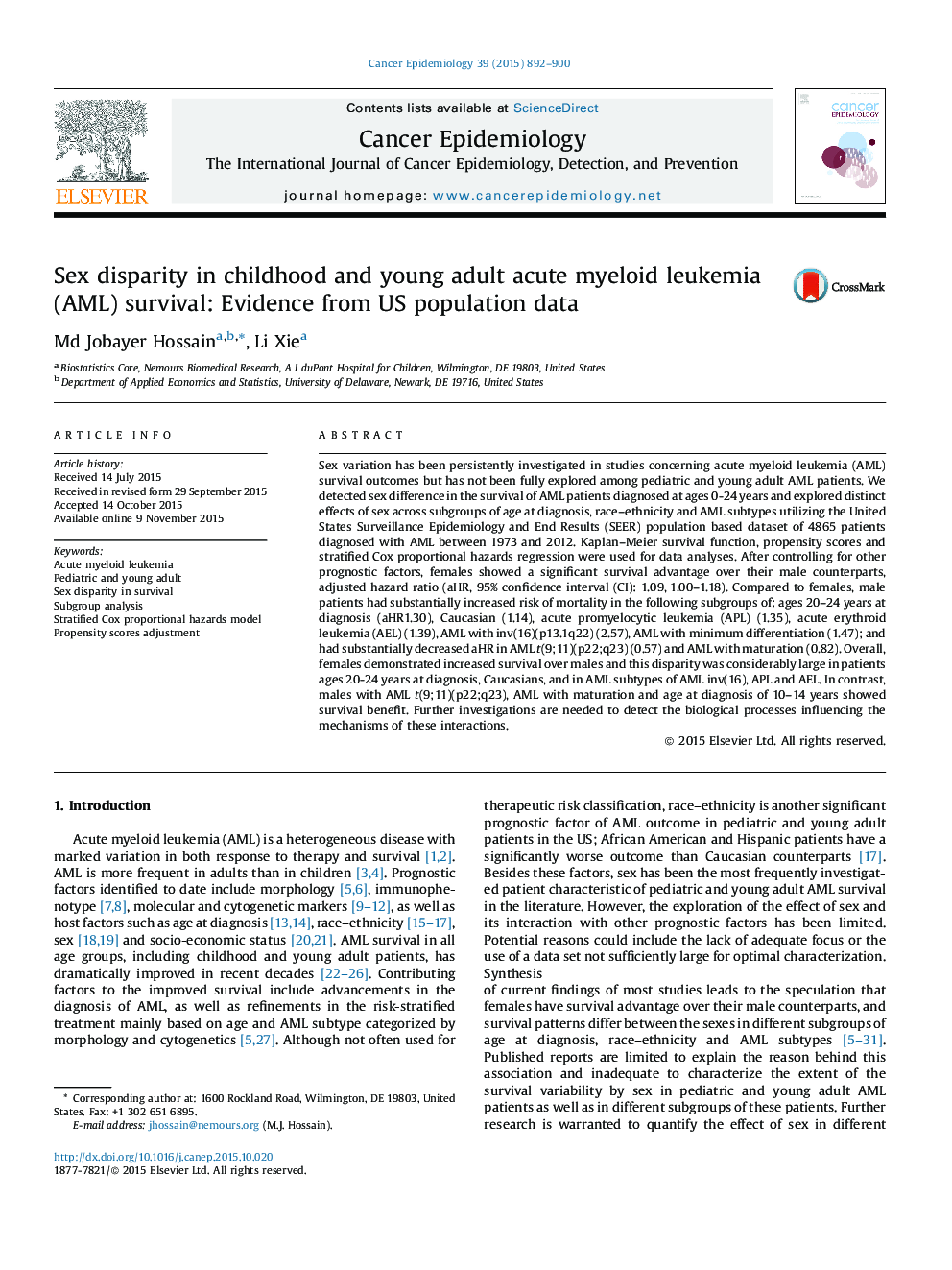| Article ID | Journal | Published Year | Pages | File Type |
|---|---|---|---|---|
| 10897240 | Cancer Epidemiology | 2015 | 9 Pages |
Abstract
Sex variation has been persistently investigated in studies concerning acute myeloid leukemia (AML) survival outcomes but has not been fully explored among pediatric and young adult AML patients. We detected sex difference in the survival of AML patients diagnosed at ages 0-24 years and explored distinct effects of sex across subgroups of age at diagnosis, race-ethnicity and AML subtypes utilizing the United States Surveillance Epidemiology and End Results (SEER) population based dataset of 4865 patients diagnosed with AML between 1973 and 2012. Kaplan-Meier survival function, propensity scores and stratified Cox proportional hazards regression were used for data analyses. After controlling for other prognostic factors, females showed a significant survival advantage over their male counterparts, adjusted hazard ratio (aHR, 95% confidence interval (CI): 1.09, 1.00-1.18). Compared to females, male patients had substantially increased risk of mortality in the following subgroups of: ages 20-24 years at diagnosis (aHR1.30), Caucasian (1.14), acute promyelocytic leukemia (APL) (1.35), acute erythroid leukemia (AEL) (1.39), AML with inv(16)(p13.1q22) (2.57), AML with minimum differentiation (1.47); and had substantially decreased aHR in AML t(9;11)(p22;q23) (0.57) and AML with maturation (0.82). Overall, females demonstrated increased survival over males and this disparity was considerably large in patients ages 20-24 years at diagnosis, Caucasians, and in AML subtypes of AML inv(16), APL and AEL. In contrast, males with AML t(9;11)(p22;q23), AML with maturation and age at diagnosis of 10-14 years showed survival benefit. Further investigations are needed to detect the biological processes influencing the mechanisms of these interactions.
Related Topics
Life Sciences
Biochemistry, Genetics and Molecular Biology
Cancer Research
Authors
Md Jobayer Hossain, Li Xie,
